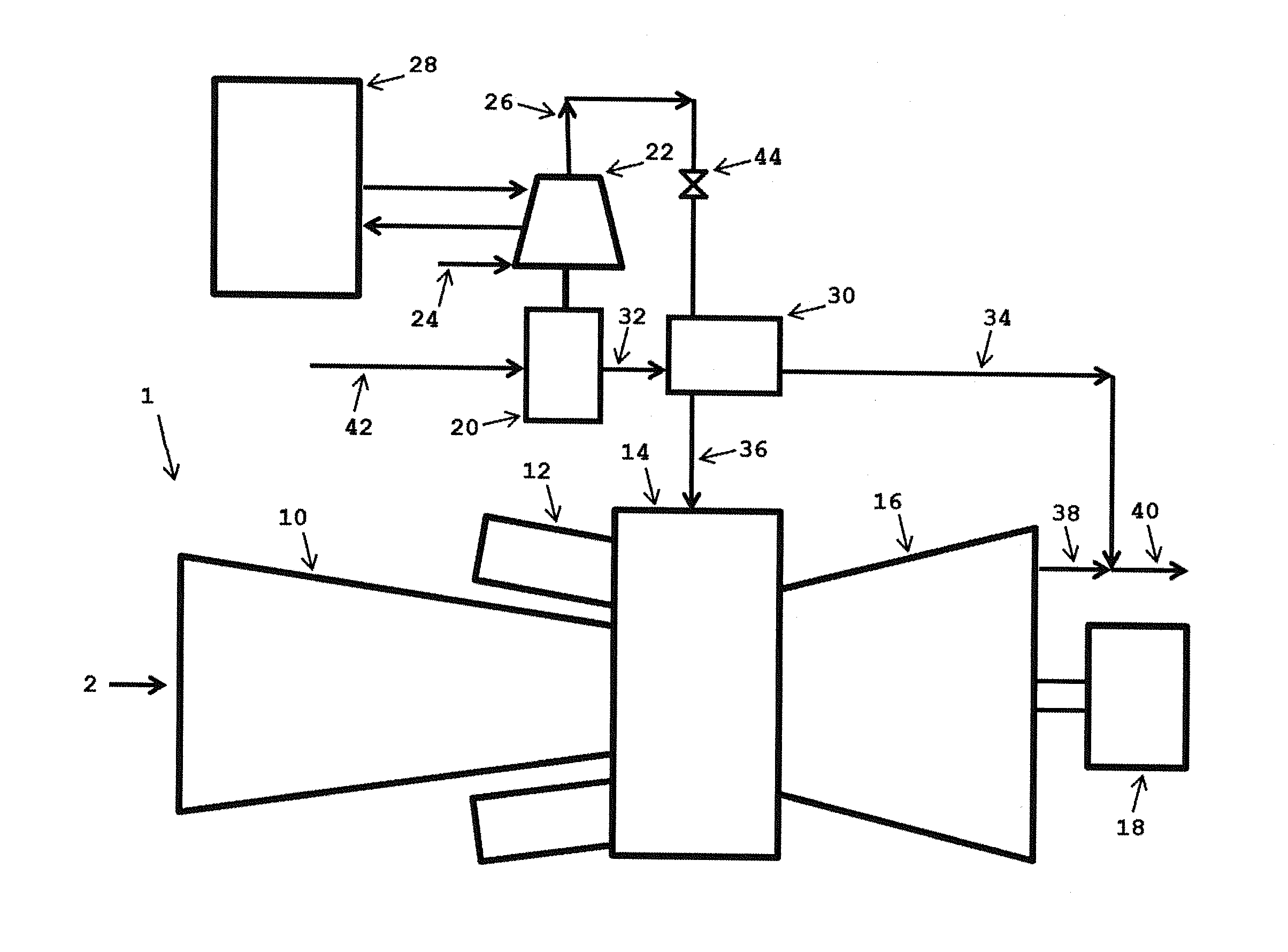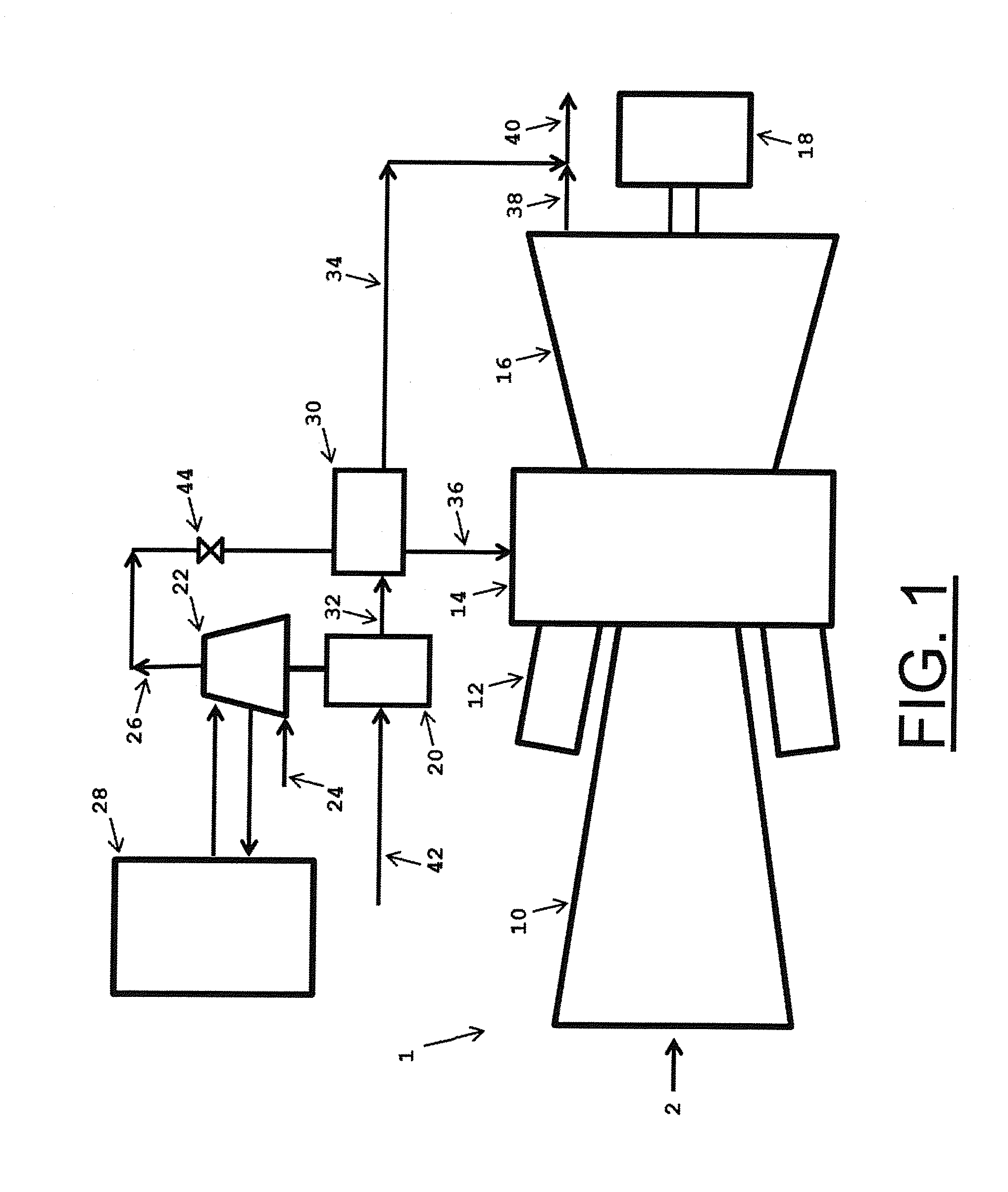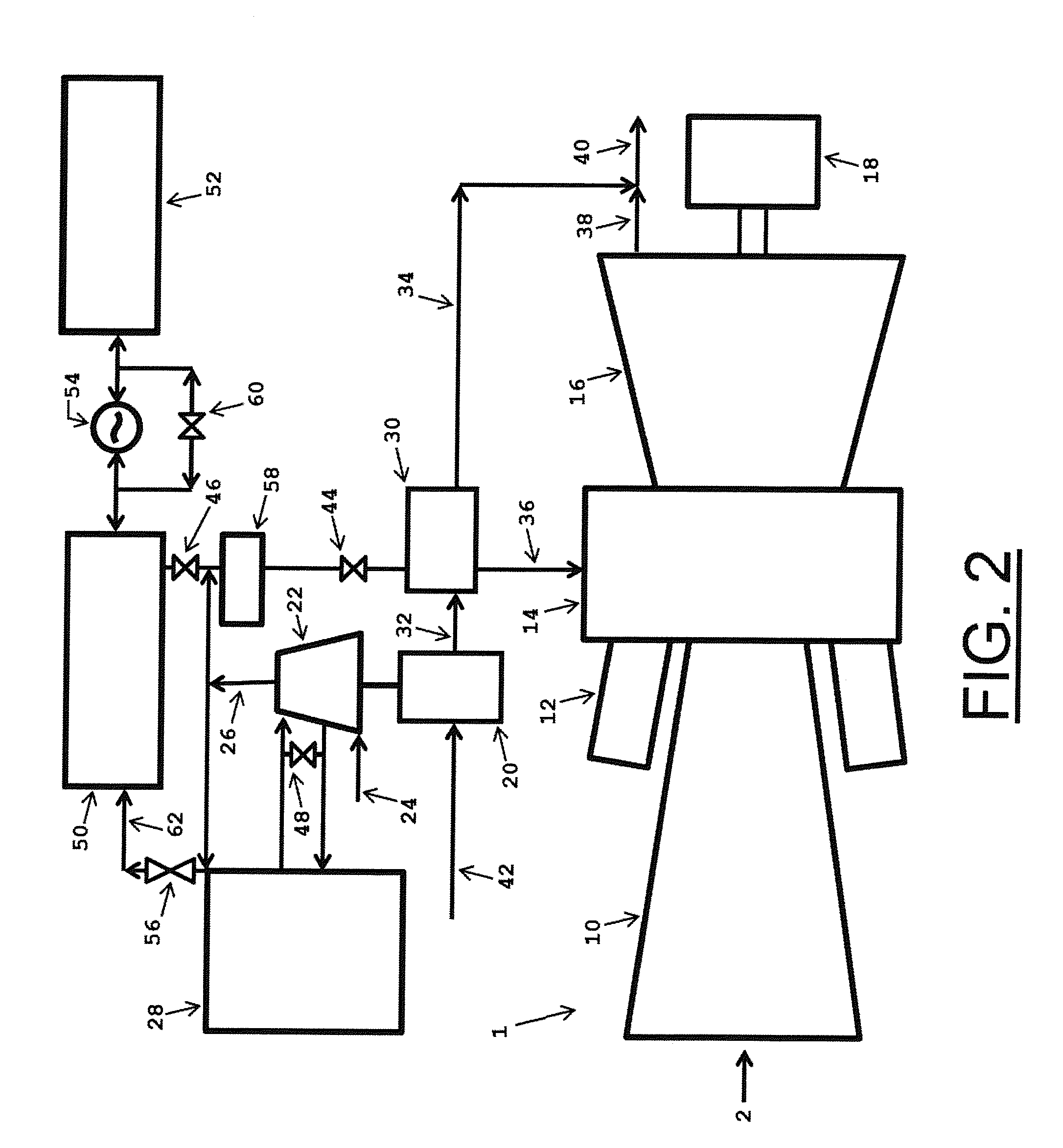Gas turbine efficiency and regulation speed improvements using supplementary air system continuous and storage systems and methods of using the same
a technology of supplementary air system and gas turbine, which is applied in the direction of turbine/propulsion fuel heating, machines/engines, efficient propulsion technologies, etc., can solve the problems of gas turbines that are forced to start up and shut down in one year, aero-derivative engines, and high maintenance costs of particular units, so as to reduce the temperature of the intercooler coolant and improve the efficiency of the intercooling compression process , the effect of reducing the electrical heating load
- Summary
- Abstract
- Description
- Claims
- Application Information
AI Technical Summary
Benefits of technology
Problems solved by technology
Method used
Image
Examples
Embodiment Construction
[0059]The components of one embodiment of the present invention are shown in FIG. 1 as they are used with an existing gas turbine system 1. The existing gas turbine system 1, which compresses ambient air 2, includes a compressor 10, combustor 12, combustion case 14, turbine 16 and generator 18. A fueled engine 20 is used to drive a multistage intercooled supplemental compressor 22 which compresses ambient air 24 and discharges compressed air 26. As used herein, the term “fueled engine” means a reciprocating internal combustion engine, a gas turbine (in addition to the gas turbine in the existing gas turbine system 1, or a similar machine that converts fuel into energy through an exothermic reaction such as combustion (e.g., gasoline, diesel, natural gas, or biofuel and similar fuel). The fueled engine draws in ambient air 42 and as a result of the combustion process, produces hot exhaust gas 32. As those skilled in the art will readily appreciate, as air in the supplemental compress...
PUM
 Login to View More
Login to View More Abstract
Description
Claims
Application Information
 Login to View More
Login to View More - R&D
- Intellectual Property
- Life Sciences
- Materials
- Tech Scout
- Unparalleled Data Quality
- Higher Quality Content
- 60% Fewer Hallucinations
Browse by: Latest US Patents, China's latest patents, Technical Efficacy Thesaurus, Application Domain, Technology Topic, Popular Technical Reports.
© 2025 PatSnap. All rights reserved.Legal|Privacy policy|Modern Slavery Act Transparency Statement|Sitemap|About US| Contact US: help@patsnap.com



